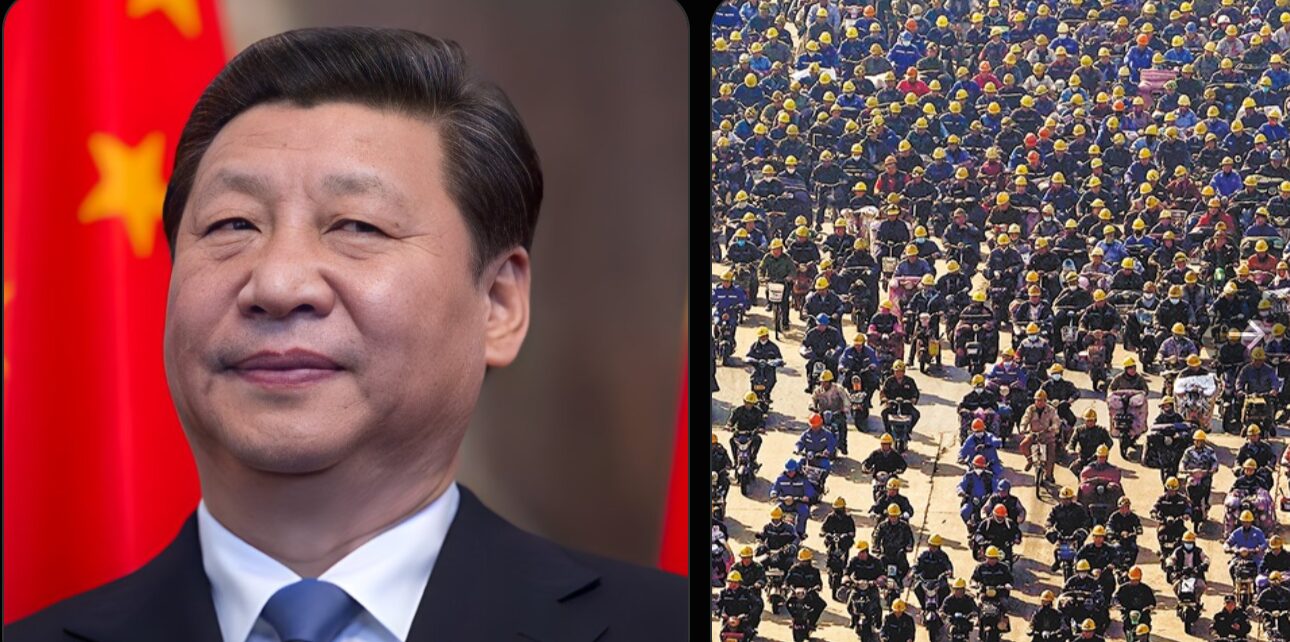China’s Shipbuilding Capacity is Now 250 Times Greater than the United States’
China’s Shipbuilding Capacity Now 250 Times Greater than the United States’
In a striking demonstration of China’s growing economic and industrial might, recent reports have revealed that China’s shipbuilding capacity is now an astonishing 250 times greater than that of the United States. This development highlights China’s continued dominance in global manufacturing and its strategic push to expand its influence across critical industries, including maritime and defense sectors. The scale of this shift in global shipbuilding dynamics not only underscores China’s industrial capabilities but also raises questions about the future of global trade, naval power, and international competition.
China’s Booming Shipbuilding Industry
Over the past few decades, China has rapidly transformed into the world’s largest and most powerful shipbuilding nation. The country’s shipbuilding industry has grown exponentially, supported by a combination of massive investments, state-owned enterprises, and a robust labor force. Today, China dominates the global shipbuilding market, producing a vast majority of the world’s merchant vessels, including oil tankers, container ships, bulk carriers, and specialized ships.
China’s shipbuilding industry has benefited from strong government support, which has provided funding, subsidies, and incentives for the sector to grow. State-owned giants like China State Shipbuilding Corporation (CSSC) and China Shipbuilding Industry Corporation (CSIC) are among the world’s largest shipbuilding conglomerates, commanding a significant share of the global market. These companies have successfully constructed some of the most advanced ships in the world, including the largest container vessels and technologically sophisticated naval ships.
China’s infrastructure, including massive shipyards along its coast, has played a crucial role in allowing the country to scale up production and maintain a competitive edge in shipbuilding. These shipyards are equipped with state-of-the-art technology, enabling them to produce ships at an unprecedented scale and speed.
Comparing the Shipbuilding Capacities of China and the United States
While the United States remains a global leader in many industries, its shipbuilding capacity has seen a significant decline over the years. The U.S. once boasted a thriving shipbuilding industry, but in recent decades, the industry has shrunk dramatically. Today, the U.S. is far behind China in terms of shipbuilding output, with many of the country’s shipyards focused on military ships rather than commercial vessels.
China’s remarkable lead in shipbuilding capacity can be attributed to several factors, including its massive industrial base, lower labor costs, and strategic focus on expanding maritime power. China has heavily invested in modernizing its shipyards, increasing production capacity, and improving efficiency. As a result, China has been able to outpace the U.S. in producing not only civilian vessels but also military ships, such as advanced destroyers, aircraft carriers, and submarines.
In contrast, the U.S. shipbuilding industry faces numerous challenges, including aging shipyards, a lack of government support for commercial shipbuilding, and a workforce that is not as large or as cost-effective as China’s. The U.S. Navy remains one of the most powerful in the world, but when it comes to commercial shipping, the U.S. has lost much of its dominance to China.
China’s Strategic Advantage in Maritime Power
China’s dominance in shipbuilding is not just an economic achievement; it also has significant geopolitical implications. The ability to produce vast numbers of ships gives China a significant strategic advantage, particularly as it seeks to expand its naval influence and control over global maritime trade routes.
The country’s ambitious “Belt and Road Initiative” (BRI), which aims to develop infrastructure and trade networks across Asia, Africa, and Europe, is partially underpinned by China’s expanding maritime power. By controlling key shipping lanes and building ports around the world, China is positioning itself as the central hub of global trade and maritime activity.
Moreover, China’s expanding naval fleet, built from its massive shipbuilding capacity, has allowed the country to assert itself as a formidable naval power. The Chinese military has made significant advancements in developing modern warships, including the Liaoning aircraft carrier and Type 055 destroyers, which are among the most advanced in the world. These military advancements have raised concerns among neighboring countries and global powers about China’s increasing influence over the South China Sea and other strategic maritime areas.
The Implications for Global Trade
China’s dominant position in shipbuilding has profound implications for global trade. As the world’s largest producer of commercial vessels, China plays a crucial role in ensuring the smooth functioning of international trade. Chinese-built container ships, oil tankers, and bulk carriers are responsible for transporting vast quantities of goods across the globe, from raw materials to finished products.
This gives China significant leverage over global supply chains and trade routes. With the ability to build ships at such an enormous scale, China has an unrivaled capacity to control the movement of goods around the world. In recent years, China has further cemented its dominance by investing heavily in ports and infrastructure in key locations such as the Indian Ocean, the Mediterranean Sea, and Africa. This infrastructure investment gives China unparalleled access to vital global trade routes.
The United States and other countries that rely on global shipping for trade may find themselves increasingly dependent on China’s shipbuilding industry. As shipping fleets age and the need for new vessels grows, countries around the world will likely find themselves turning to China for new ships, even if it means being reliant on a foreign power for such critical infrastructure.
The Naval Implications for the United States
For the United States, China’s dominance in shipbuilding presents a unique set of challenges. The U.S. Navy remains the most powerful in the world, but China’s growing naval capabilities, underpinned by its shipbuilding capacity, could pose a long-term strategic threat. The U.S. military relies on a strong naval presence to protect global trade, project power abroad, and safeguard national security interests. As China strengthens its fleet, it could challenge U.S. influence in key regions, particularly in the Pacific and the South China Sea.
Additionally, the growing importance of commercial shipping to global trade means that China’s shipbuilding industry could potentially hold significant leverage over the U.S. and other countries that rely on shipping for goods transportation. China’s control over such a vital component of global commerce could shift the balance of power in international trade and geopolitical relations.
Environmental Concerns and Technological Advancements
As China leads the world in shipbuilding, there are growing concerns about the environmental impact of such large-scale production. The shipbuilding industry is known for its significant carbon footprint, with large vessels contributing to global emissions. However, China has made efforts to address these concerns by investing in green technologies and cleaner ship designs.
The country has also been at the forefront of developing new types of vessels, such as autonomous ships, electric-powered vessels, and ships that use alternative fuels like hydrogen and LNG (liquefied natural gas). These innovations not only improve efficiency but also help mitigate the environmental impact of shipping, aligning with China’s broader goals to reduce carbon emissions and promote sustainability in its industrial sectors.
Conclusion: The Future of Global Shipbuilding
China’s shipbuilding capacity, now 250 times greater than that of the United States, signals a dramatic shift in global industry dynamics. This dominance allows China to exert influence over both global trade and international maritime security. As the country continues to invest in its shipbuilding infrastructure, both commercially and militarily, it is poised to maintain its leadership position in this critical sector for years to come.
The U.S., which once boasted a robust shipbuilding industry, now faces a steep challenge in keeping up with China’s advances. The future of global shipping, trade, and naval power will be heavily shaped by China’s shipbuilding industry, and the geopolitical ramifications of this dominance will likely reverberate across the globe in the coming decades.

















Post Comment